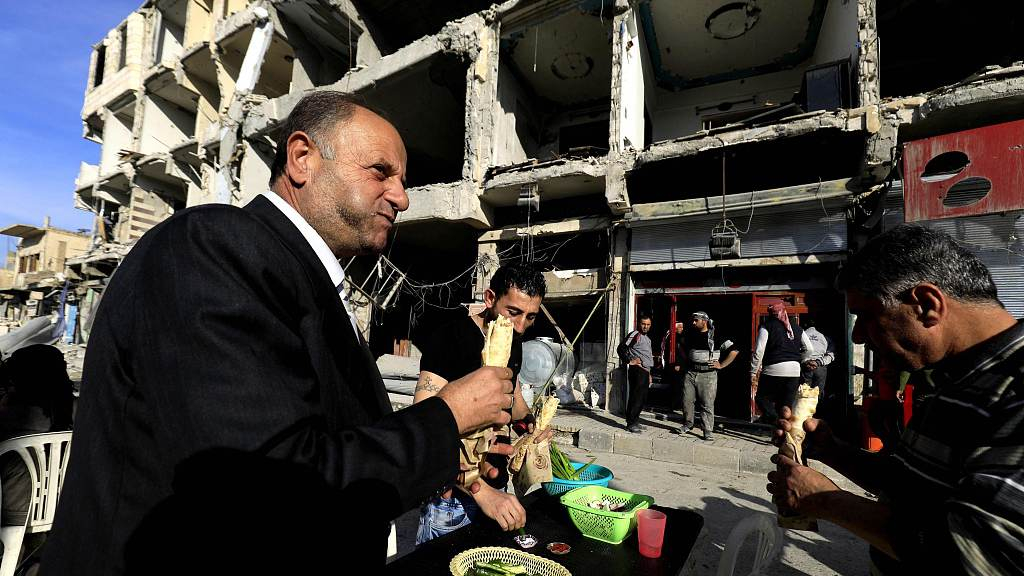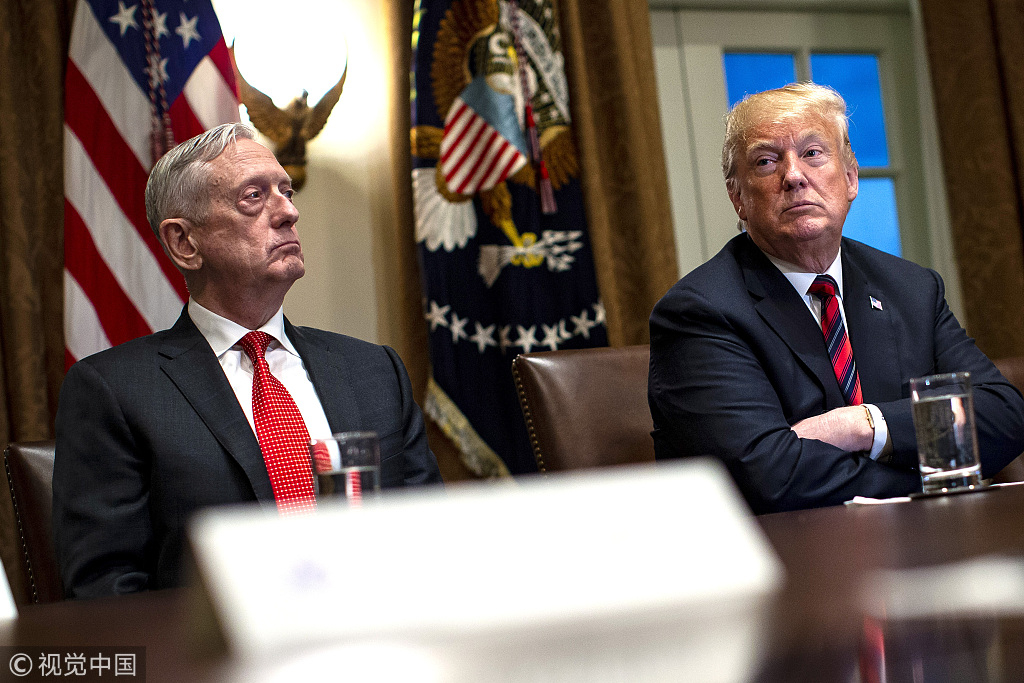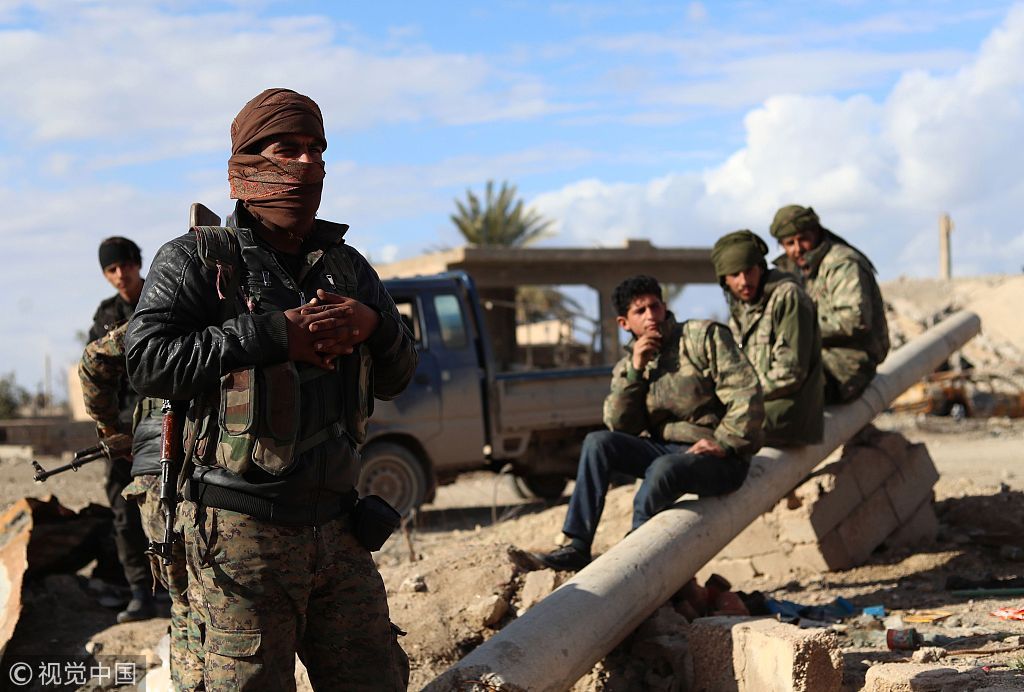
North America
22:16, 06-Feb-2019
Trump's State of the Union address: What is 'principled realism' in Syria and Iraq?
Updated
11:00, 07-Feb-2019
By Wang Yan

In his second State of the Union (SOTU) address, U.S. President Donald Trump declared his foreign policy in the very first minute of his speech, calling it a policy "that puts America's interests first."
In this vein, Trump touched on the question wrangling between his administration and the Pentagon towards the end of his speech – what's next for the U.S. in Syria?
Trump started his Middle East policy remarks by saying that he had followed an approach of "principled realism." He cited this as the reason for the relocation of the U.S. embassy to Jerusalem.
This attitude also applied to U.S. involvement in Syria and Iraq.
"Great nations do not fight endless wars," Trump reiterated this claim during the SOTU. Trump made it clear that "it is time to give our brave warriors in Syria a warm welcome home."
A debate about the withdrawal

James Mattis (L) and President Donald Trump. /VCG Photo
James Mattis (L) and President Donald Trump. /VCG Photo
On December 19, Trump vowed to pull out 2,000 soldiers on the ground in Syria in a tweet. The surprise statement sparked a new round of discussion on the rationale of the decision on Capitol Hill.
Although the United States Department of Defense has reported that ISIL now controls only around 20 square miles of territory in Syria – down from 34,000 back in 2014 – others have argued that the physical defeat does equal a complete victory over ISIL.
James Mattis, the former defense secretary, said as much, when he warned that the ISIL threat still exists, even in the face of a physical defeat. This was one of the reasons Mattis cited for his resignation in December 2018.
Mattis is not alone in his beliefs. Other top military leaders have made the same argument, including the top commander of U.S. forces in the Middle East, Gen. Joseph Votel. On Monday, a report by a Defense Department watchdog stated that ISIL fighters could regroup six months to a year after Americans leave.
Despite the opposition, Trump reiterated his desire to bring home U.S. troops in Syria. Though he initially said the withdrawal would happen immediately, and later shifted to a position of a gradual withdrawal, he did not offer a timeline in the SOTU address.
Trump's plan to 'watch' Iran
However, when it comes to Iraq, Trump has made the argument to stay. In an interview with CBS last week, he mentioned his intention to keep soldiers in Iraq, stating, "since we spent a fortune on building this incredible base, we might as well keep it."
So, what makes Iraq different from Syria?
According to Trump, the value in staying in Iraq is to keep a "watch" on Iran. The geographic location of the al-Asad airbase between Syria and Iran gives the U.S. the ability to strike either country if there were ever a need, argues Trump, saying the airbase is "perfectly situated for looking at all over different parts of the troubled Middle East rather than pulling up."
Trump has long railed against Iran, calling the Obama administration's negotiations with Iran on the Joint Comprehensive Plan of Action (JCPOA) a "disastrous" deal, while on the campaign trail. Before officially pulling out of JCPOA, he was reluctantly persuaded by advisers that it was better than any alternative. Those advisers – Rex W. Tillerson and Lt. Gen. H. R. McMaster – were ultimately ousted from their position in succession and replaced with two of the deal's most vociferous critics, Mike Pompeo as Secretary of State and John R. Bolton as National Security Adviser.
In his SOTU address, Trump said his administration decided to act decisively in confronting Iran.

Fighters from the Syrian Democratic Forces (SDF) gather in eastern Syrian Deir Ezzor Province, on the border with Iraq, February 2, 2019. /VCG Photo
Fighters from the Syrian Democratic Forces (SDF) gather in eastern Syrian Deir Ezzor Province, on the border with Iraq, February 2, 2019. /VCG Photo
Despite his plan in Iraq, the Iraqi parliament could vote for a withdrawal of troops. On January 28, Qais al-Khazali, the leader of a powerful Shiite militia, stated that he expects Iraq's parliament to vote for the withdrawal of American troops from Iraq soon, underscoring "the jostling for power between Iran and the U.S." has put Iraq in between. He argued that there is no longer any need for U.S. troops in Iraq following the defeat of ISIL, adding that troops may be forced out if they refuse to leave.
On the Syrian side, the U.S.' allies in the country, the Syrian Democratic Forces (SDF) could be at risk if the U.S. leaves. The SDF is largely made up of Syrian Kurdish fighters affiliated with the People's Protection Units (YPG) of the Democratic Unionist Party (PYD). Both of these groups are considered to be affiliated to the Kurdistan Workers Party (PKK) – a group that Turkish President Recep Tayyip Erdogan regards as a terrorist organization.
Erdogan has a long history of hostility against the PKK. Without the stronghold from U.S. forces, not many alternatives are left for the SDF. They would most likely move closer to Russia and expand its engagement with Assad administration. Furthermore, to buffer the possible incursion from Turkey, they might potentially surrender border posts on the Turkish border to the Syrian government.
Five years into the battle has claimed the lives of more than a quarter of a million people. Whether the U.S. stays or remains in the region, it's still an open question whether modern war under the name of a "surgical strike" or "leadership decapitation" can fundamentally resolve differences in ideological beliefs.
(Top image: Syrians eat falafel in front of the disfigured King's Restaurant, the oldest and most famous falafel restaurant in Raqa, after a huge military operation led by U.S. warplanes against ISIL, January 9, 2018. /VCG Photo)

SITEMAP
Copyright © 2018 CGTN. Beijing ICP prepared NO.16065310-3
Copyright © 2018 CGTN. Beijing ICP prepared NO.16065310-3